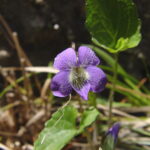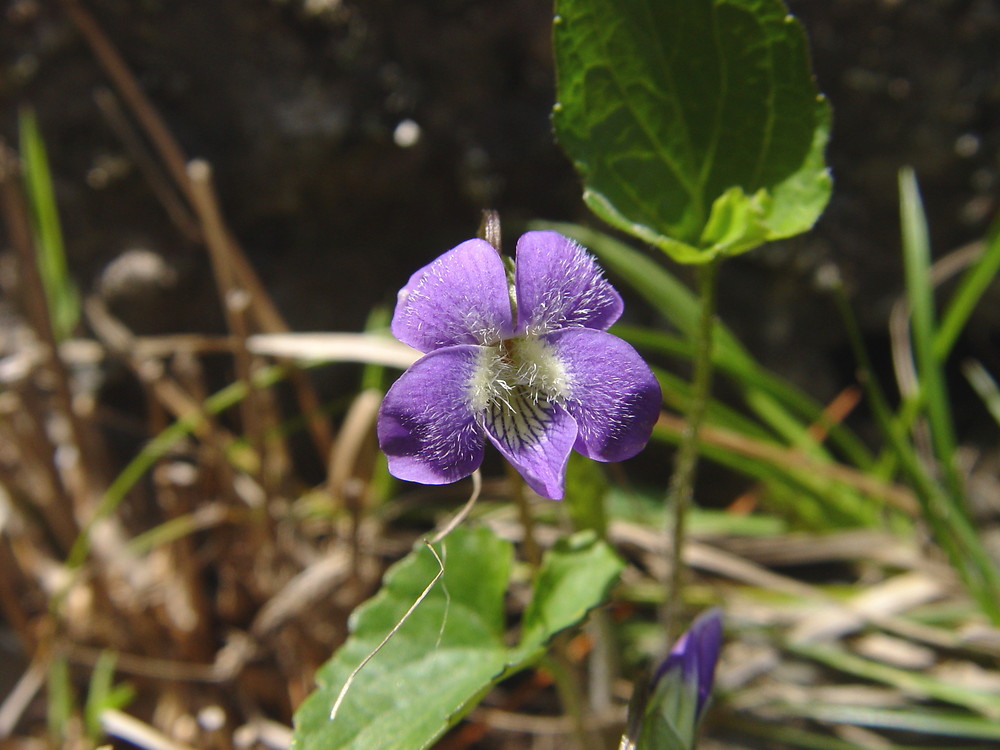
By Heather Pruiksma
Spring has sprung, and gardeners everywhere are itching to get their hands into the soil and among the roots. At Grow Native Massachusetts, we encourage including more native plants in your gardens, which can be less work than it might seem — if you’re willing to be a little patient.
Native plants are plants that have been growing in a particular habitat and region, typically for thousands of years or much longer. Also called indigenous, they are well adapted to the climate, light, and soil conditions that characterize their ecosystem. Within this system, they have evolved important relationships with other native plants, animals, fungi, and bacteria.
Growing native plants in any garden or landscape provides food and habitat for dwindling insect populations, including beloved butterflies, fireflies, bees, and other pollinators. Many of those insects will attract birds to your backyard as an important food source. Ecologist Desiree Narango’s research suggests that a minimum of 70% of your garden’s biomass should be native in order to adequately support the nutritional needs of nearby hatchlings. “Biomass” means the total plant material, not the number of plants, so if you have one big oak in your yard, you’re already off to a great start!
Transitioning your garden to be more native, wild, and welcoming to pollinators and birds does not need to be an overwhelming or expensive undertaking. In fact, you can get started by being a little lazy.
Sit back and wait a bit longer than you might normally do this year before attacking your garden beds with spade and hoe. Let the accumulated leaf litter linger in place as it imparts nutrients, retains the soil moisture, and safely harbors slumbering insect larvae that will soon emerge to be an important part of the ecosystem and the diet of newly hatched baby birds.
If you need to satisfy an urge to spring clean, focus your efforts on clearing the pathways for safe walking and defining your garden’s shape. Some folks wait until the average daytime temperatures remain above 50°F for a week before removing leaves from garden beds, but really it is best to leave the leaves indefinitely as a natural mulch and pollinator nursery.
As you wait, you may take a hands-off approach to the “weeds” as well. Watch them grow a bit until you are able to identify them (there are some great plant ID phone apps like Picture This or iNaturalist that can help you with this tricky step). You may be surprised to learn that many of the seedlings you have been diligently removing from between your well-spaced perennials are actually naturally-seeded native plants.
When you identify a non-native plant, particularly if it is an invasive species in Massachusetts, go ahead and remove it. (While you’re at it, make sure none of your existing plantings include invasive species). But let those bonus native plants grow where they are, and see how they fill in and soften the edges of your garden and attract the attention of pollinators.
Through this process, I have discovered a love for the native violets that I had previously spent year after year pulling from my garden. Now they spread between my older plantings to form a charming ground cover that replaces expanses of mulch and suppresses invasive weeds, and is a favorite food of the caterpillars of many fritillary butterflies to boot!
Now we can start thinking about digging. Once you know where your “bonus plants” are filling in and you have removed invasive plants, you can identify spaces where you might want to fill in even more with new plants. Keep in mind that native plants really do like to be crowded together; this provides a supportive structure for them to grow in (rather than flop over) and continues to suppress those unwanted non-native invasive weeds. Find a reliable native plant source, ask lots of questions about what will work in your particular space and conditions, and experiment with a few new plants.
If you have the room, try grouping a few of the same species together. This makes it easier for pollinators to find what they like. If you can only add a few plants, prioritize native shrubs and trees which typically support more beneficial insects than flowers and grasses and offer critical habitat for birds.
Your native plant garden, once established and thriving, is going to be much less maintenance than you might be expecting, and will give you more time to simply enjoy the beauty—and wildlife—in your yard, as they are well-adapted to the conditions of this region. More importantly, watching your garden fill with vibrant life will bring the gratification of knowing you are having a positive impact in a world where environmental challenges often feel insurmountable. You can truly make a difference!
Grow Native MA Plant Sale
Friday, June 2 and Saturday, June 3
Advance registration will be required at grownativemass.org/Our-Programs/plant-sale. Shopping on Friday will be limited to Grow Native members at the Advocate/ Family level and above, and Saturday open to anyone, regardless of membership status.
Can I pre-order plants?
Grow Native will have a pre-sale for a special selection of trees, which is open to members at the Advocate level and above.
When can I see your plant list?
The pre-sale catalog will be released 2 – 3 weeks prior to the sale, and our full plant species list will be posted 7 – 10 days beforehand.
Make sure you are subscribed to Grow Native Massachusetts’ monthly eNews to catch the most up-to-date announcements about the sale!
Heather Pruiksma is the executive director of Grow Native Massachusetts



Sorry, the comment form is closed at this time.